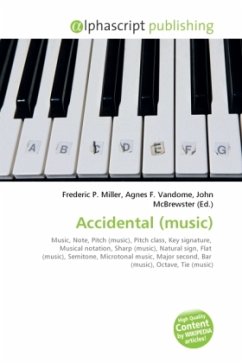In music, an accidental is a note whose pitch (or pitch class) is not a member of a scale or mode indicated by the most recently applied key signature. In musical notation, the symbols used to mark such notes, sharps ( ), flats ( ), and naturals ( ), may also be called accidentals. An accidental sign raises or lowers the following note from its normal pitch, usually by a semitone, although microtonal music may use "fractional" accidental signs, and one occasionally sees double sharps or flats, which raise or lower the indicated note by a whole tone (though their most common usage is in keys in which the altered note is already raised or lowered by the key signature, so the altered note is only a half step from its usual pitch in that key). Accidentals apply within the measure and octave in which they appear, unless canceled by another accidental sign, or tied into a following measure. The modern accidental signs derive from the round and square small letter b used in Gregorian chant manuscripts to signify the two pitches of B, the only note that could be altered. The round b became the flat sign, while the square b diverged into the sharp and natural signs.
Bitte wählen Sie Ihr Anliegen aus.
Rechnungen
Retourenschein anfordern
Bestellstatus
Storno








